Sony FE 55mm f/1.8 Z vs Canon FD 50mm f/1.2 L
Long time after my last post, but here is one short article about two nice “standard” lenses tested in a field on Sony A7.
In the left corner – one of the holly grail standard lenses from the film era, holder of L title in the Canon World Lens League, highly sought after among lens freaks around the globe, Greaaaaaat, Faaaamooouuus, Canon FD 50mm f/1.2 L!!!!!!
In the right coooorner, there is raising star with big S, lens that just recently entered professional ring, lens that despite its seemingly slower speed, doesn’t afraid to challenge even the best in the business such as Otus 55/1.4 with which it shares same Zeiss camp, all modern, all fresh, or beautiful – Ssssooooony Zeisssss FE 55mm f/1.2.
Proven build quality against fancy hi-tech materials, careful craftsmen work versus robotized precision, legendary opticians versus computerized modeling, old vs new in every respect…
Even the first look at the image above, clearly shows the giant leap in design evolution. What a shame, that Sony didn’t ask Zeiss to design their A7/r cameras too 🙂
Canon is actually smaller (shorter) lens, but with its E-mount adapter (as shot above), it equalize in that respect with Zeiss. However, Canon FD is slightly heavier lens.
Size might be surprising considering that FE 55/1.8 is actually full f-stop slower. There is AF of course, but thinking of Canon EF 50/1.8, Zeiss still seems bigger than necessary.
When you take caps off, the difference in speed and related glass diameter is more than evident.
Much more glass on the left, but filter diameters are not so different – Canon has 52mm, Zeiss 49mm. Kudos to Sony for being quite consistent at 49mm across the lens line, because that can save not only finance but most importantly amount of necessary equipment and allow more convenient use of filter systems. (There is nothing as annoying as looking for the proper adapter ring for LEE system, or polarizer that is surely somewhere in the backpack, but can’t be found while sun is getting lower and lower…).
Even more significant difference is on the rear side of the lenses.
As you can see, Canon rear glass element is almost in the same level as the mount itself, while Zeiss is deeply recessed. Rear element is also wider (it has to deliver twice as much light) but lack of baffling might cause some flaring problems, related to the sensor reflections (it wasn’t problem with the film). In my brief tests on Sony A7 (camera that has sensor reflection problems) I haven’t noticed anything significant though.
Built quality of both lenses is very good, but I have to give an edge to Zeiss in that regard, it looks more refined and more importantly it is supposed to be weather sealed.
On the other hand, while Zeiss has well engineered focus ring, it is still focusing by wire, and that will never result in a subtle tactile feeling that well dampened MF focus ring gives.
Image quality
Both lenses were tested on Sony A7 in this article. (In some upcoming articles I am planning to use Sony A7r and Sony a6000 for lens test too).
Comparison 1 – resolution at peak f-stop (f/8)
Sony FE 55/1.8 Z at f/8
Click here for original – https://www.flickr.com/photos/97543230@N02/13411870183/sizes/o/
Canon FD 50/1.2 L at f/8
Click here for original – https://www.flickr.com/photos/97543230@N02/13411851865/sizes/o/
And few comparison crops at 100%
Click here for original – https://www.flickr.com/photos/97543230@N02/13412122664/sizes/o/
While in Lab Zeiss 55/1.8 Z (DxO, Photozone etc.) deliver amazing resolution results on Sony A7r and A7, in a real life, those numbers doesn’t shows up that significantly. At least, I can’t see some deal braking differences at f/8 from the image above.
Both lenses performs really well in this test scenario as far as I can see.
Here is another comparison scenery at f/5.6.
Sony FE 55/1.8 Z at f/5,6
Click here for original – https://www.flickr.com/photos/97543230@N02/13412165844/sizes/o/
Canon FD 50/1.2 L at f/5,6
Click here for original – https://www.flickr.com/photos/97543230@N02/13411886995/sizes/o/
And related 100% crops
Click here for original – https://www.flickr.com/photos/97543230@N02/13411882323/sizes/o/
At f/5.6, some slight edge in resolution should be given to Zeiss, but the questio is how much that is a) field relevant, b) result of slightly larger magnification (55 vs 50mm), c) differences in a focus plane.
Overall, I don’t think that anyone would complain about resolution of either lens in a real life, especially when you find something more exciting to shot than I did.
Where I can see differences though is color rendition. Zeiss shifts more toward magenta while Canon toward green. While I usually like those greenish Canon colors more, I have to say, that in this case, Zeiss 55/1.8 attracts me much more.
Here is comparison shot where you can hopefully see what I am talking about
Click here for original – https://www.flickr.com/photos/97543230@N02/13413340144/sizes/o/
Not a big deal, but you can see more magenta in the sky and water on Zeiss shot, and that makes overall color feeling more appealing to me.
I also tried to apply my post processing routine to the shots above and here are related larger crops (still 100%, but larger crop from the original image).
Click here for original – https://www.flickr.com/photos/97543230@N02/13413099953/sizes/o/
There is little doubt that despite raving reviews about Zeiss 55 f/1.8 Z resolving power, one can see almost no difference at most apertures smaller than f/4 between those two lenses in that regard. But is is also obvious, that both lenses renders outstanding amount of details.
You can see original files (post processed) here – Zeiss and Canon
While those fast standard lenses are used in many photographic situations, they are most often used for shallow DOF photography. As I have no nice models to stand and pose, all I can show here is a little spring green just showing up on the trees.
Click here for original – https://www.flickr.com/photos/97543230@N02/13412132634/sizes/o/
While Canon FD 50/1.2 L wide open does blur the far background just a little bit more, what is much more apparent is its vignetting at that aperture.
Difference in DOF will be more significant if the background would be closer to the subject in focus, but than there are lenses better suited for subject isolations. In the setup above, bokeh looks OK, but nothing more than that. Don’t jump on me please, both lenses delivers nice bokeh in this situation, but Canon EF 50/1.2 L is much smoother and MOG Primoplan 58/1.9 (e.g.) will go swirly circus, so both will deliver something more distinguished.
To see original images click for Canon at f/1.2, Canon at f/1.8 and Sony at f/1.8
So far, it seems that both lenses handle CA quite well too, but I am sure that in a critical conditions (high contrast areas in back light and shiny highlights in general) Zeiss will beat Canon due to moder coatings.
Finally, comparing sharpness and bokeh in the evening scene, didn’t reveal any drastical differences either.
Those are crops from original images that you can check here – Canon at f/1.2, Canon at f/1.8 and Sony at f/1.8
You can see some green highlight outlines on Canon wide open which disappears stopped sown a bit, while Sony is “cleaner” in that regard. Overall Zeiss delivers more pleasing rendering of highlights in my opinion.
One thing is important to add here – Zeiss has 9 blades aperture, while Canon 8. That would be apparent at smaller apertures and it is matter of taste what you would prefer. I like 8 blades slightly more.
Who is the winner of this match?
The owner of either lens.
Both lenses are much better than I will ever be as photographer, and both will make their owners feeling special and rewarded with some signature images.
In a direct comparison I would say that I expected Zeiss to be really good and it certainly didn’t disappoint, but it’s rather Canon that really surprised me.
Here is my little summary:
(1-10, 10 is max)
Build Quality: Zeiss 8, Canon 8
Design: Zeiss 9, Canon 6 (no, red ring doesn’t help…)
Speed (Low Light): Zeiss 7, Canon 9
Sharpness: Zeiss 9, Canon 8
Colors: Zeiss 9, Canon 7
Subject isolation ability: Zeiss 6, Canon 7
Bokeh: Zeiss 7, Canon 6
Contrast: Zeiss 9, Canon 8
Vignetting at f/1.8: Zeiss 9, Canon 9
Price: Zeiss 3, Canon 4
Not tested – flare, CA, distortion…
OK, Zeiss is better, but not by miles and Canon can be found cheaper.
If you don’t need AF, investing in Canon FD 50/1.2 L is not bad idea. Unlike new Zeiss, there is only limited number of Canon 50/1.2 Ls now on the market, and there is little to break (no AF, electronic contacts, etc.) in the future, so it might retain its value better too.
Speaking about performance, in most situations you will hardly see field relevant difference and that extra stop of Canon, can be sometimes very useful.
One thing is clear – whichever you choose, you will have great lens to enjoy for years.
Please help support this page and upcomming reviews and buy through affiliate links, with no extra cost for you:
Buy on BHPhoto: Sonnar T* FE 55mm f/1.8 ZA Lens
Buy on Amazon: Sonnar T* FE 55mm f/1.8 ZA Lens
To help this page survive, your donation will be highly appreciated.




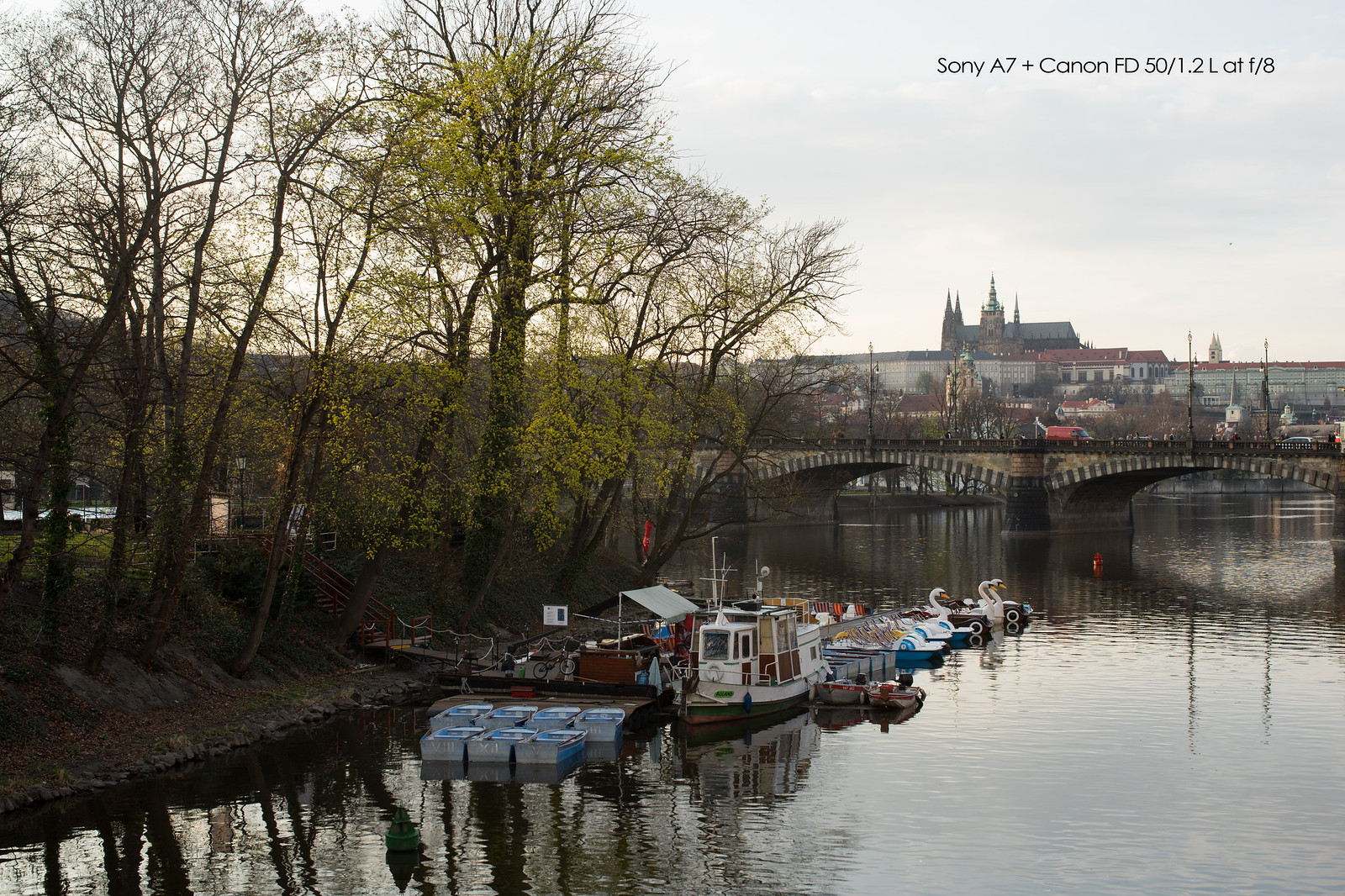
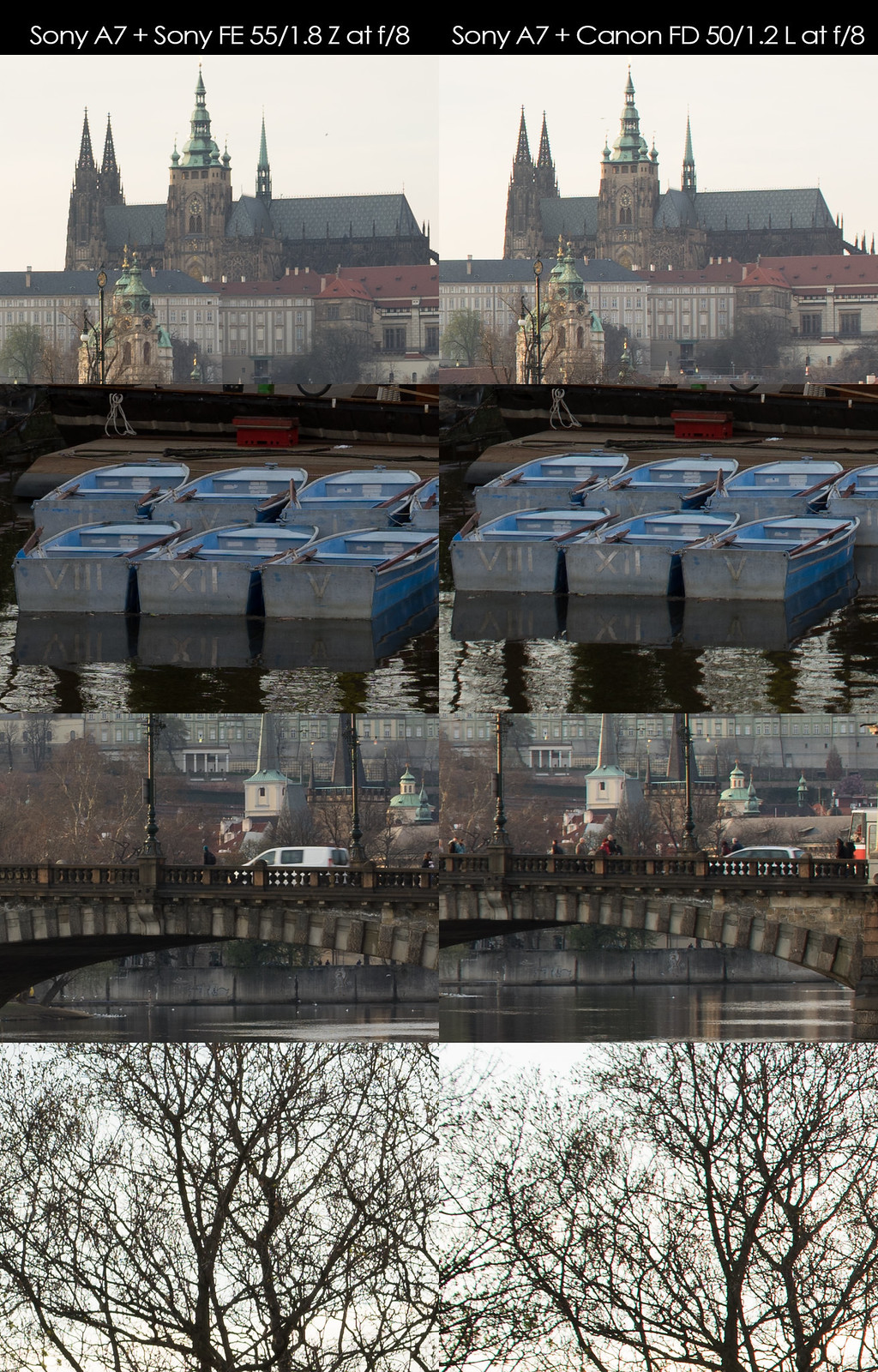
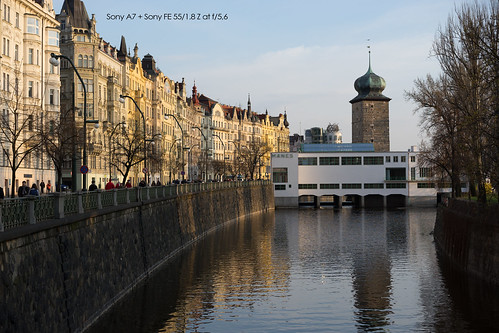


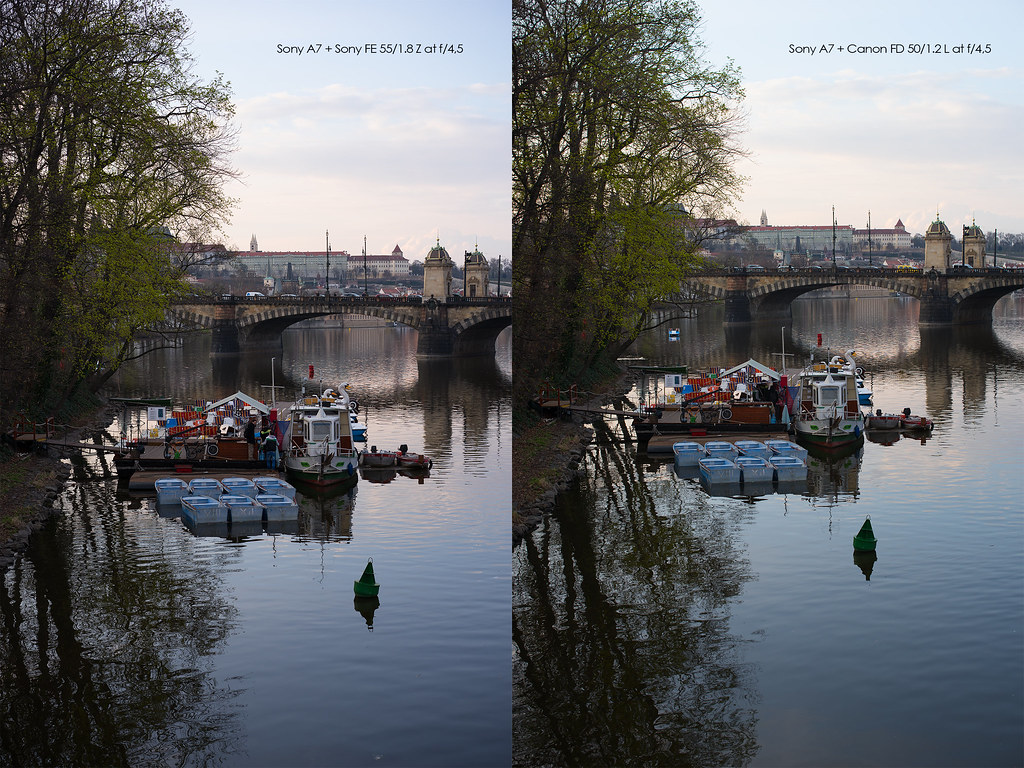
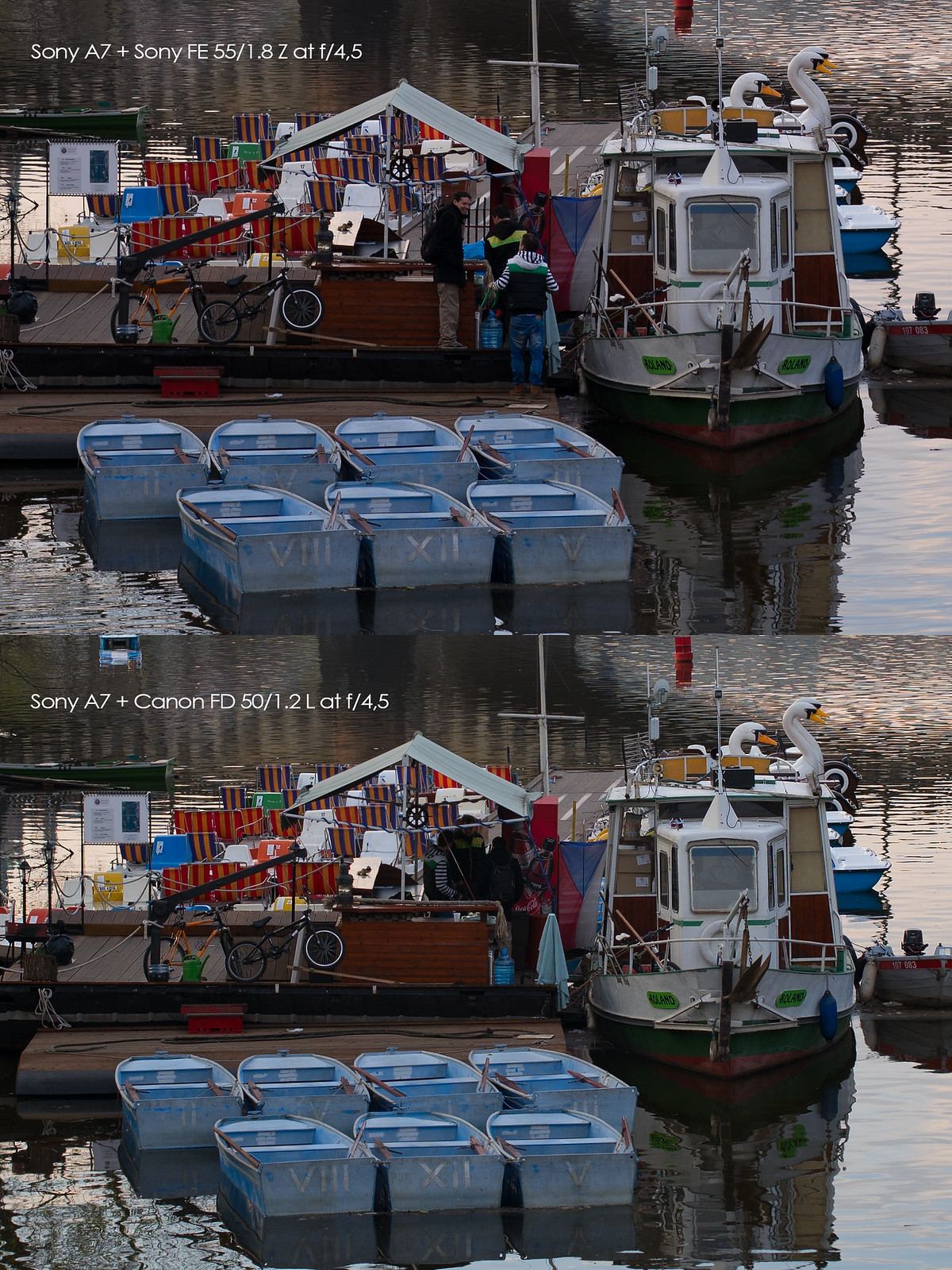

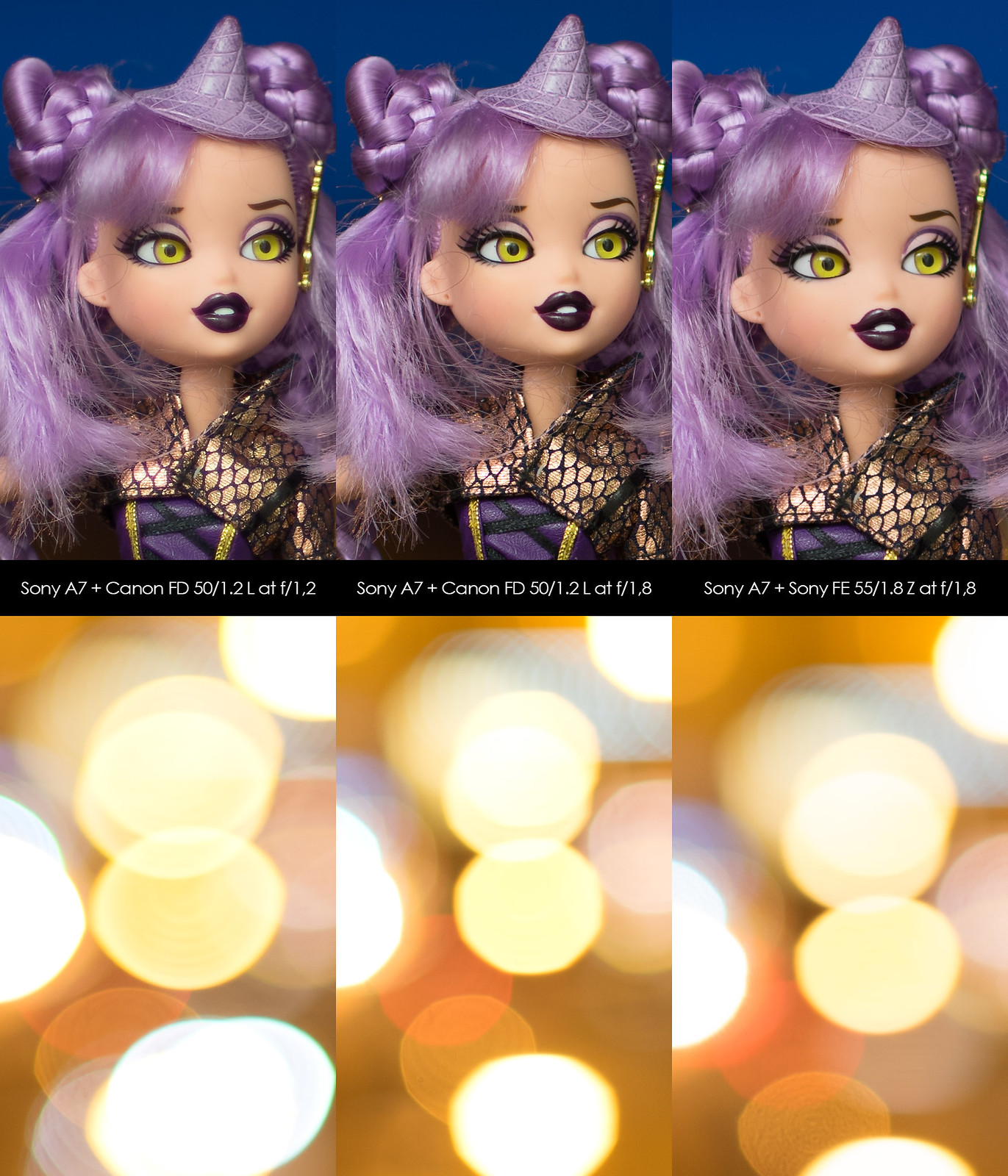
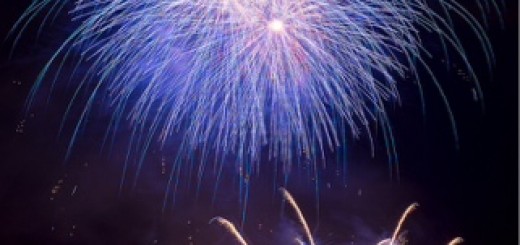
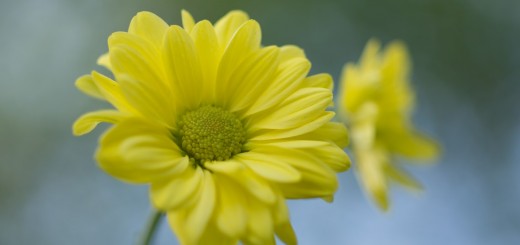
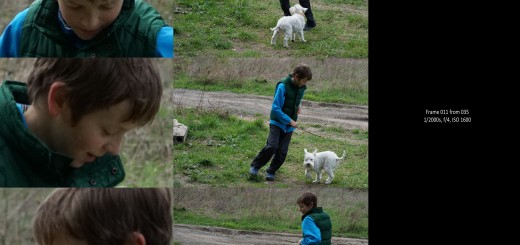
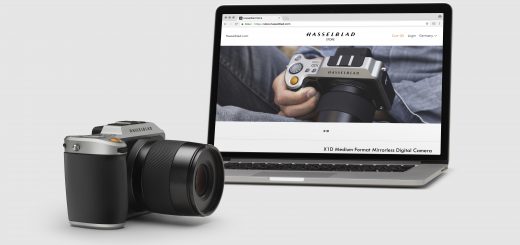
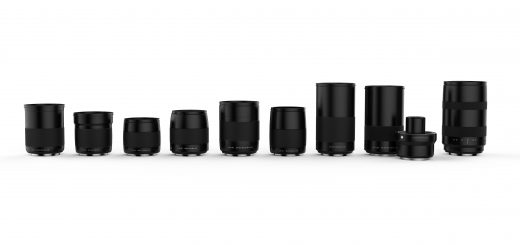
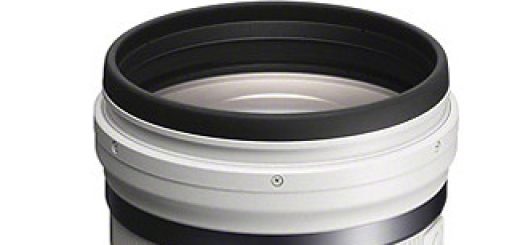
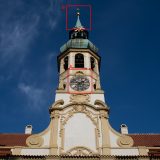
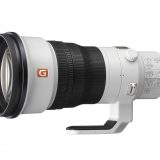
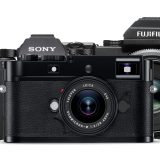
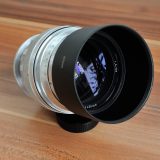
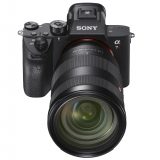
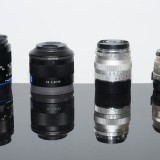
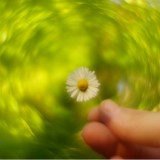
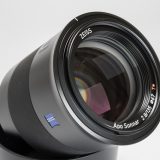
An interesting comparison. I’m not so surprised by the results – and agree with your conclusions completely. Either lens will do just fine, and surpass my photographic skills for years to come.
This is the worst comparison EVER. Your language is biased and you are justifying most of the time for Canon. You obviously hold a large interest in Canon and failed to even mention it.
Things like “If you don’t need AF”…
“in most situations you will hardly see field relevant difference” – thats because you tested this lens on the Sony A7 and not the A7r. One quick trip to DXO Mark, shows the resolving power of this lens to be much more suited for the A7r.
P.S: The zeiss lens is $500 USD cheaper…. “Canon can be found cheaper” – in used condition…
It would be nice if you don’t hide behind anonymous. No reason for that, as I respect everyones opinion. I have no interest for Canon, it’s not in production for many years so why would I?
Enjoy DxO figures, I am sure they will improve your photography,
Cheers,
Viktor
The typical reaction of the Zeiss zombies (as bad as Apple ones) when they realize there are cheaper, better alternatives in the market and they just overpaid for a name.
Grow up and learn from your mistakes or keep living in denial…your choice 😉
I kinda agree with anonymous, I do have both lenses right now, and on the a7r, the differences are more glaring.
heck, the canon stopped down is actually even worse than the nikon 50 1.2 AI (that lens is on the level of zeiss stopped down), however, canon spanks nikon wide open (that’s why you shoot these things)
Zeiss has better skin tones, however canon is nearly a stop faster, and it makes kind of a big difference, since high iso of the A7r isnt very good.
I dont use 50’s for landscapes, however, I do use them a lot for people photos, and I’m stuck with both lenses and having a hard time deciding which to keep. You have the nikon, sucks wide open, soft, low contrast, however, very bright and sharp stopped down. Zeiss, immaculate, but 1.8. Canon does everything well, 1.2, but not excellent when it comes to landscapes…… however, I didnt buy for landscapes, I bought for the blurring power and low light. Blurring power….. with a clean background, the 1.2 blurs more, however quality goes squarely to zeiss, the bokeh is so clean, melts completely smooth. Subjects also pop more with the zeiss, better contrast, higher definition.
I think I may eventually go with zeiss tbh. Better skin tones matter a lot to me, and I think the future A7r ii will have better low light ability….. hedge my bet.
Thanks for the comment Anon. You have some good points there.
If you are looking for smoothest bokeh at 50mm, check also Canon EF 50 f/1.2 L, beside being one of the worst Canon L lenses according to most reviewers, I can’t disagree more when it comes to bokeh. Sony FE 55/1.8 ZA has certainly smooth rendering of circular highlights, but there is a bit of coma and spherical aberration and also a trace of onion rendering. However, main difference is in magnification (spread) of the highlights at f/1.8 vs f/1.2.
Not that one always need that f/1.2 🙂 but it is good to have it.
One more thing – at f/1.2 up to f/2.8, it is not always easy to acquire critical focus, especially with live subjects. I have very bad results using AF at those apertures, especially with Sony cameras and thus I prefer manual focus. Focus by wire on FE 55/1.8 ZA is a nightmare when it comes to fine tunning in my experience.
Cheers,
Viktor
As a 90% FD Shooter on my A7ii I find your comment very confusing. I was shock on how easy and precise it is to manual focus the FE 55mm..not sure if a firmware somehow helped but mine is super easy.
Hi Gabriel,
I think it is very individual. For me it’s very annoying experience, but I am glad it works for you.
Cheers,
Viktor
this quite old lens perform quite well !
Good work man and thank you !
Well, the poster does have a point; you should have compared the lenses on the A7R, for the A7R will show any faults of a lens. Also, the Zeiss is better for all the things you DID NOT test. But, as you show, the Canon gives indeed an excellent result for an older manual lens, and gives us reason to consider it when cost is a factor. I’m very impressed by your results for the Canon. But, I see the Canon lenses are rising in price, so the value in the Zeiss for say 25% price point more than the Canon is also reason to balance price/value. Another lens that is the same price now as it was when new is the Zeiss G45, which gives stellar results on the A7R. I suppose we have Sony to thank for the reason why old but very good lenses are increasing in price?
Thanks for your post. I am not sure if A7r will have any significant impact on the lens IQ comparison, and I don’t agree that A7r will better show faults of the lenses. Higher resolution sensor of A7r might indicate that lens resolving power is bellow sensor one, but that is not the case with those two lenses. A7r on the other hand, has serious issues with shutter shock, and that can have much stronger impact on the sharpness of the resulting files. This was the main reason why I didn’t use A7r for this comparison.
I compared mainly IQ in the field, and didn’t take in consideration other features such as AF, as I rarely use AF anyway. But I didn’t forget to mention it in the review.
I agree about high prices for the Canon FD L (and not only those) lenses recently. That is unfortunate, because just few years back, they were available for peanuts. First system that influenced prices was MFT however. Those cameras come earlier than NEX, but new FF E-mounts probably pushed the prices further.
Hi
happy to see you back reviewing lenses !
And thanks for this interesting review.
Just to introduce :
I do own quite a few Canon FD lenses -but not this very one- and I really enjoy using them with the A7R.
I also use my Canon EF lenses on the A7R with a ‘King’ adapter.
I do own the Sony-Zeiss FE 55mm f/1.8 too. It is in fact the only FE lens I own (I have several E lenses for the Nex 7 though). And the only one I plan to buy.
I was hesitating to buy the Canon FDn 50mm f/1.2L but I decided to buy the Sony-Zeiss instead.
I’m happy with the decision. Main drawback of the Sony-Zeiss is, as you said, the “focus by wire” thing. I hate it.
As for the “Shutter shock” with A7R, well, anyway, if you use high enough a speed – or low enough a speed, this should not be an issue. I usually get really sharp images with the A7R. And to be honest, even if I try to stick to 1/(2x[Focal length]) or faster speed, I hardly have any shutter shock blurr, whatever speed I use.
As for the Canon FD, my favorites with A7R are
– Canon FDn 85mm f/1.2 – all times favorites
– Canon FDn 35mm f/2.0
– Canon FDn 28mm f/2.0
– Canon FDn 100mm f.2.0 (the Canon FDn 85mm f/1.8 is also good)
– Canon FDn 20-35mm f/3.5L
– Canon FDn 50mm f/3.5 Macro
– Canon FDn 80-200 f/4.0 L (with fluorite elements) – long but still light
I do own the Canon FDn 24mm f/2.0 but I’m less convinced.
The Canon FDn 135mm f/2.0 is good too but has a lot of CA when out of exact focus
NB: In general, the lens hoods on Canon FD lenses are a nightmare to use.
I’ve done some comparisons outdoor but have no time to publish.
I’ve also done several tests with Imatest but I need to improve my process.
I just come back from Italy and have mainly used the old Canon EF 16-35mm f/2.8L – because it’s easier.
I was hesitating to buy the Canon FDn 50mm f/1.2L too (I own a bunch of Canon FD 50mm 1.4 and 1.8) but I decided to buy the Sony-Zeiss instead.
I’m happy with the decision. This lens is very good.
Main drawback of the Sony-Zeiss is, as you said, the “focus by wire” thing. I hate it. (As I hate the same thing on the Highly expensive but wonderful Canon EF 85mm f/1.2L II… No, I hate it more on the A7R, because I can zoom in the viewfinder and then I try to get an even better focus. ‘Try’ is the keyword.)
I plan to buy a Canon FD 35mm f/2.8 TS (or maybe I’ll break the bank for the Canon EF 24mm f/3.5L II ?).
You’re right about the prices those old lenses are reaching. I think they were mainly under-rated because it was just impossible to use them on any digital camera before the MFT/Nex came to the market.
Have a good day
Raoul
Thanks Raoul and congrats on the very nice lens collection of yours.
Hi Viktor,
Apologise for not posting it here.
Thank you so much for your input and the link.
Otus will be too big and clunky to use on A7. besides, budget wise it’s also beyond my reach 🙂
As for radioactive lens, how harmful is it to use such lens? is it not advisable?
Heard that it is considered harmless but not sure how true it is.
Hi Gus,
as far as I know, they shouldn’t harm you if normally used. More dangerous were radioactive elements used for viewfinders in its age, because they got much closer to the eye and cell structures. You can find nice list and many more information about radioactive lenses here – http://camerapedia.wikia.com/wiki/Radioactive_lenses
That Canon FD 55/1.2 SSC Aspherical is really one of the top guns in that respect…
This is a very interesting comparison, thanks! However, I would say that the 50mm f1.2 Canon is well matched to the sensor. Use the A7R and you may see the two separate out a little bit. Resolving brilliantly on 36MP does take quite a bite more ingenuity and in my own testing on my site, its on the A7R that the 55mm Sony Zeiss shows why its so expensive, especially between f4 and f5.6. I also reviewed the FDn 50mm f1.4 which is truly brilliant too. Canon made some fantastic FD glass…
Thanks Tom. I tend to agree, but my problem with A7r is Shutter Shock 🙁 When you want to compare lenses, you need to be sure that Shutter Shock does not enter the game significantly as it might involve variable, making comparison hard to evaluate. Don’t get me wrong please, I am not implying that A7r is not usable because of shutter shock induced blur, but at shutter speeds that I am often using for lens testing (trying to stay at base ISO), I experienced several affected shots, and decided to use A7 instead, until/if Sony bring firmware that can add first curtain opening delay and thus reduce the danger of shutter shock.
It took me 2 days of work that I can throw in the can, with Sony FE 70-200/4 OSS just recently, because I tried it first with A7r, just to find later, that many shots were slightly blurred.
A7r is a great camera, just not suitable for my tests.
Cheers,
Viktor
Hi Viktor,
I had one copy of the FD 50 L on my A7R, and ghosting was the worst problem with it actually. At night, bright point light sources would scatter into several very notable flying-saucer-shaped ghost images all around the lens. Maybe just my copy–you should try it with yours.
I doubt the Zeiss has that problem
Hi al, I’ll have to double check that, because I haven’t noticed much problems with A7r yet. A7 was entirely different story with plenty of sensor reflections. Sensor reflections are a problem of lens and sensor together. Lens itself might work fine on another camera.
I should add that it’s probably not just the fault of the lens, but the A7R sensor also–internal reflections. But it was extremely easy to generate. It happened every time I pointed the 50L at point light sources at night.
Sony has made me a manual focus fan… however, now I have the a7ii… I really will like a lens that will autofocus on the body… I wonder if that is Sony’s real back door way of selling glass… making autofocus a pain w non native glass..?
Very good
Thank you
Great review, thanks Viktor. I was wondering if you know how big is the difference in IQ between the FD 50/1.2 L and non-L versions? Pricewise, the L version is between 2-3x more expensive and I was wondering how big is the IQ gap really?
I’ve been through lots of images on Flickr and there seems to be a noticable difference, but not a huge difference. That’s assuming people have been labeling their images correctly!
Hi Anthony,
in my experience, main diference is in micro contrast. Non L version has slightly less contrast overall, probably due to the less sophisticated coatings or used glass.
L version is also slightly sharper, but that is hardly visible in practice. Better build (but non L is nicely build too), higher micro contrast (notable difference), slightly better CA correction and more prestigous label 🙂 are main differences.
Cheers,
Viktor
Thanks for the reply. How do you think the L version compares with the Konica Hexanon 50/1.4 wide open and at f/1.7? Do you think both lenses are equally good at landscapes? In this comparison, the reviewer concluded that the FD 50/1.4 was sharper across the frame and at f/8 than the 1.2L (which was softer in the corners). http://www.jeroenterlingen.com/blog/2015/7/19/canon-fd-50mm-lens-comparison
One issue I have with the methodology of this review: http://www.jeroenterlingen.com/blog/2015/7/19/canon-fd-50mm-lens-comparison is that it was done entirely at short range, which isn’t very useful for landscape photography.
Yes, that’s true. Considering landscape use, you should pay more attention to the flaring, color shift, CA , SA, then about sharpness and field curvature, because at standard landscape f-stops, diffraction is already taking its part and DOF is usually compensating for the field curvature (not for mechanical vignetting and SA though). While global contrast is easy to add during post processing, boosting micro contrast is not that easy and while most advanced users are using tone mapping to increase it, it¨s not the same as when it is rendered by the lens. In that respect FD 50/1.2 L is very good for its age.
His 55/1.2 Asph. (Men, I would like to get one of those again), is visible yellowed by rare earth element inside and this drastically reduces contrast. he should perform UV cleaning for that gem.
Cheers,
Viktor
Hi Anthony,
I mentioned in my reviews few times, that distance of the focus plane can make huge difference in the resulting rendering. At close distances, it is not all that easy to acquire critical focus and overall, testing lenses is complex and challenging process, where it is more than easy to make mistake which will shift the results in one or the other way. Look at his bokeh test, where he simply doesn’t count with DOF differences and his subject is closer in the 50/1.4 than 50/1.2L…
Canon FDn 50/1.4 is however really good lens, and I have to agree with reviewer that looking at it rationally, you would find very few reasons to lift the funds to the L level.
But than, what is rational about us – gear heads and LLA (legacy lens addicts)?
Cheers,
Viktor
Ha, it takes a reviewer to review a reviewer! I hadn’t noticed the issues until you mentioned them. Well spotted. I also just realised that there was a page two in which he did take some shots outdoors.
At the end of the day, I think you’re right that rationality only goes so far when it comes to lenses!
Interesting that the reviewer still prefers the Olympus Zuiko 50/1.4. Do you have an opinion on this lens? A number of folks on Flickr think its the best in class.
Hi Anthony,
itś difficult to answer your question about Oly 50/1.4, because there were quite a few versions of this lens. I like most the latest one with a serial number over 1100000, because multicoating is improved on it. Early versions are single coated and they have lower contrast and later versions with MC designation are less sharp from my experience. In general, lens is good because itś small, but they are not entirely my cup of tea. I would mostly pick up Canon FDn and Konica AR, (not to mention some more exotic options such as Contarex or Topcor RE)) above Oly, but thatś me…
Regards,
Viktor
Hi Viktor,
I’m with you on the Oly, its images have a characteristic look, but it’s not consistent, probably because there are so many versions. I don’t llike many the shots I’ve seen, but I’m not sure why. I think its a lack of contrast. Most of the photos that I do like were taken on a MFT sensor, so it’s not the same thing. With the FDn 50/1.2 however, there are many shots on Flickr that I like.
This weekend I gave my Konica 50/1.4 a really good test around a campfire and indoor night shots. On the whole, it did really well (and I did too considering no OIS!!), but I wasn’t pleased with the noise at ISO 3200 on my A7r. It was acceptable at ISO 2000, which is 2/3rds of a stop slower, so I think the faster half-stop of a f/1.2 lens would have made a difference. So, that’s given me GAS!
GAS is GAS, it’s not easy to fight it 🙂
Before you try 50/1.2, did you try some de-noising software such as dfine e.g.?
Reason why I am suggesting this is that due to the pixel vignetting phenomenon, you won’t get half a stop with f/1.2, in fact, most probably you won´t get more light at all on the vast part of the sensor. The only thing that you will see, is decreased DOF…
Cheers,
Viktor
Yes, I’ve been using Dfine for some years. Amazing product. After using Dfine2 on ISO 3200 pics they are okay, but the artifacts are noticeable. Interesting about the pixel vignetting affecting light performance. I’m picking up a Ex++ non-L FDn 50/1.2 from a dealer on Monday for >25% cheaper than ebay and it’s just been serviced by Canon. I can’t lose, even if I don’t like it!
Actually, I’m thinking the best solution is to simply buy an A7s, because prices have dropped significantly. Last month’s £200 cashback offer put it at £1400.
p.s. Of course, the A7s II has everyone salivating for it, but for the same price I can get the A7s and ZM 35/1.4….and I’d rather invest my money on good glass.
Damn, a lot of dude getting their tongs in a bunch here! I own both lenses and find they are both good for different times. I also think the review is pretty bang on. I bought both lenses with no intention of just keeping one, they are different lenses to be used at different times.
I am seeing different results by different people. Some of this discrepancy is explainable: A more advanced with higher resolution lens may show the lens differences better than an older lower resolution one: Testing lenses on an A7r II may result in differently than on an A7. Also, I imagine modern lenses designed and produced through a modern computerized process and which inherently carries a higher level of precision are more consistent across different instances of the same lens while, in older times when they were producing Canon 50mm 1.2 lenses, one might expect more noticeable differences among different instances of the same lens.
Still, I am roaming around in the digital world to find some weird results. Just a few days ago I went across a blog where the blogger made a comparison of Canon 50mm nFD f1.4, 50mm nFD f1.2 L and 55mm f1.2 SSC Aspherical. He did not deduce a conclusive advantage of one over the others!!! Indeed the much cheaper f1.4 lens significantly outperformed its much more expensive siblings in the corners while the center difference was not as big as one might have expected. In another blog, someone compared the $1000 Sony Zeiss FE 55mm with a $20 Minolta MC 1.7/55 lens. While he concluded the Sony was obviously a better lens, the super cheap Minolta was able to hold its ground in most comparisons.
I once compared my Sony Zeiss E 24mm to a Minolta MD 28mm f2.8 lens. While in a typical urban landscape scenery, the difference between the two lenses wasn’t obvious; the Sony Zeiss was for sure the sharper better performer. However, it was when I decided to take another comparative test shot, this time of the delicate design of the fabric on the couch in my living room. That was when a much bigger difference showed up. I quickly resold the 28mm lens and decided I am more than content with my rather expensive Zeiss lens.
Recently, I have decided to give more chance to vintage manual lenses , getting them whenever I get a price-wise good deal on clean defect free instances of these lenses. and then compared them on a sort of standard test chart and finally keep the better performer. However, when I checked prices online I realized some of these old lenses are priced so high, price-wise, they nearly even match some of the expensive modern Zeiss lenses from Sony or Zeiss itself! Check out the Canon FD 50mm and 55mm and 85mm L and ‘SSC Aspherical’ lenses on Ebay. The ones that are still in very good shape with near mint glass conditions reach the price of modern Zeiss and Sony Zeiss 50mm, 55mm and 85mm lenses! You may even observe Otus level prices!! Obviously, there are people out there who ‘believe’ in the performance of these lenses and are willing to pay premium prices for them. I personally, would much rather buy modern high quality Zeiss lenses unless the rival vintage lenses are significantly cheaper.
After examining one of the side-by-side shots above and thinking more about this whole comparison, I have come to say more: I read somewhere that the difference between high quality fast modern lenses and legacy lenses such as this Canon that were once the pinnacle of lens designing in their times, become obvious only at wide apertures and/or in the corners plus improvements which have been done to reduce CA, flare, etc. No magic has happened to make modern lenses absolutely better in all departments. The Canon lens must also have been quite expensive at its time (considering inflation, etc.). Now, it can be found for cheaper since it is an old MF lens. So I feel like I shouldn’t be surprised if it can hold its ground against the new Sony Zeiss lens. That said, I went to Flickr and compared the images at the highest resolution center, I noticed the S/Z lens is significantly better at the corners. I am talking about the f/8 images. In fact, I wasn’t expecting such a difference at aperture 8 between the two assuming by the time one reach f/8, both must exhibit excellent sharpness across the image. That’s not the case. The S/Z contain quite more details. This more obvious in the lower left in the tree trunks and in the ground. Micro contrast is also better on the S/Z and the Canon lens also shows quite a bit of CA on the branches in the upper left. If you are one like me who very frequently put the subject or center of interest somewhere close to the corners, the S/Z lens must be a better choice. For some people, central sharpness matter most because of their style of photography hence the Canon being practically as good as the Sony for them.
So, by looking at some of the shots taken by the same author of this article, I can conclude the S/Z lens is clearly a better lens even stopped down to f/8 on the 24mp A7! How come, the author himself hesitates to mention this, I wonder.
That’s surely because author is paid by Canon to promote lens they don’t produce anymore. Or, maybe Russians are hacking the results? What else can I say I wonder…
z6isot
h3azv8
3kqfc6
td8hya